Ditapis dengan
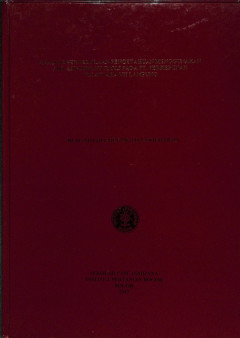
Analisis Pengelolaan Pengetahuan Menggunakan APO Assessment Tools pada PT.Per…
- Edisi
- -
- ISBN/ISSN
- -
- Deskripsi Fisik
- xi, 58p.;ilus;29x21cm
- Judul Seri
- -
- No. Panggil
- 651.8
- Edisi
- -
- ISBN/ISSN
- -
- Deskripsi Fisik
- xi, 58p.;ilus;29x21cm
- Judul Seri
- -
- No. Panggil
- 651.8
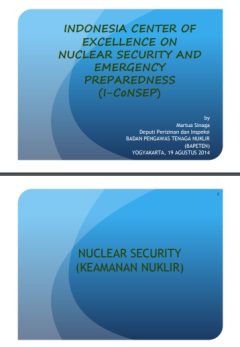
INDONESIA CENTER OF EXCELLENCE ON NUCLEAR SECURITY AND EMERGENCY PREPAREDNESS…
PPT ini dipresentasikan oleh Martua Sinaga Deputi Perizinan dan Inspeksi BAPETEN pada tanggal 19 Yogyakarta 2014 di Yogyakarta
- Edisi
- -
- ISBN/ISSN
- -
- Deskripsi Fisik
- 16p
- Judul Seri
- -
- No. Panggil
- 621.039 SIN I
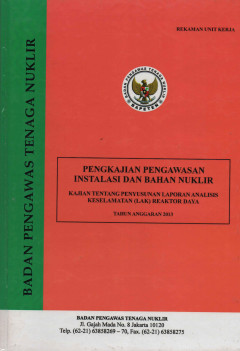
Kajian Tentang Penyusunan Laporan Analisis Keselamatan (LAK) Reaktor Daya, TA…
Berdasarkan undang-undang dan peraturan yang berlaku, organisasi pengoperasi instalasi nuklir harus mendapatkan persetujuan (approval) dan izin (license) dari BAPETEN sebelum membangun dan mengoperasikan PLTN. Untuk mendapatkan persetujuan tersebut, maka organisasi pengoperasi harus mampu menjamin dan menunjukkan keselamatan PLTN yang akan beroperasi, yang disajikan dalam bentuk Laporan Analisi…
- Edisi
- -
- ISBN/ISSN
- -
- Deskripsi Fisik
- ix, 129 p. : illus. ; 30 cm
- Judul Seri
- Seri Rekaman Unit Kerja
- No. Panggil
- 604
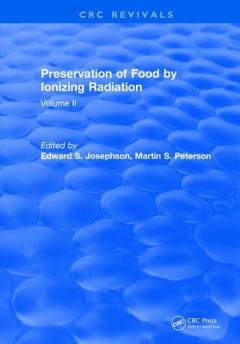
Preservation of Food by Ionizing Radiation Volume II
Food Scientists the world over should keep abreast of advances in konwledge and techniques in this developing new food process. The place to start is with these three volumes, which are, without question, the most comprehensive and the most authoritative source fo information on the basic science and technology yet published on food preservation by the application of ionizing radiation.
- Edisi
- 2
- ISBN/ISSN
- 9781315896885
- Deskripsi Fisik
- xvii,341p.;illus, 23cm
- Judul Seri
- -
- No. Panggil
- 664.0288 JOS P
Power Semiconductor Drives
This textbook introduces students to the underlying principles of operation of power semiconductor drives. It explains every facet of application of power electronics to the control of electric motors in industrial drives. The book is primarily intended for B.E./B.Tech. students of Electrical Engineering/ Electrical and Electronics Engineering having courses in Electric Drives/ Power Semiconduc…
- Edisi
- 1
- ISBN/ISSN
- 0471898317
- Deskripsi Fisik
- xviii, 354p:25 cm
- Judul Seri
- -
- No. Panggil
- 621.317 DEW P
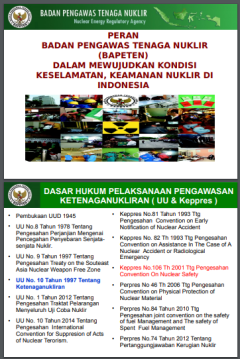
Peran Badan Pengawas Tenaga Nuklir (BAPETEN) Dalam Mewujudkan Kondisi Keselam…
PPT ini dipresentasikan pada 6 NOvember 2014 terkait peran BAPETEN dalam Keselamatan dan Keamanan Nuklir di Indonesia
- Edisi
- -
- ISBN/ISSN
- -
- Deskripsi Fisik
- 49p;illus
- Judul Seri
- -
- No. Panggil
- 621.4835 BAP P
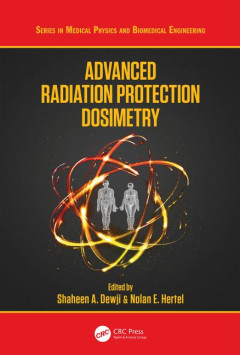
Advanced Radiation Protection Dosimetry
This book discusses advanced radiation protection dosimetry. Published by CRC Press which consists of 10 chapters. This reference book can be used by scientists and practitioners in the field of radiation protection. In addition, for students of health physics and medical physics. Some subjects such as the fundamental concepts of radiation protection, bioknetic models, dosimetric models, dose c…
- Edisi
- -
- ISBN/ISSN
- 9781498785433
- Deskripsi Fisik
- xxv,480p.;illus, 25cm
- Judul Seri
- -
- No. Panggil
- 612.014480287 DEW A
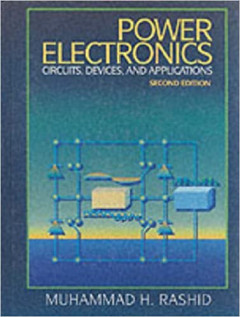
Power electronics: Circuits, Devices and Applications 2th
An exploration of the state-of-the-art in power conversion techniques and power semiconductor devices, this edition features a bottom-down approach, covering the characteristics of power semiconductor devices first and then the fundamentals of conversion techniques. It also examines the characteristics of modern ower semiconductor devices such as SCrs, BJTs, MOSFETs, SITs, SITHs, IGBTs and MCTs.
- Edisi
- 2
- ISBN/ISSN
- 013678996-x
- Deskripsi Fisik
- xviii, 702p.:illus, 25cm
- Judul Seri
- -
- No. Panggil
- 621.317 RAS P
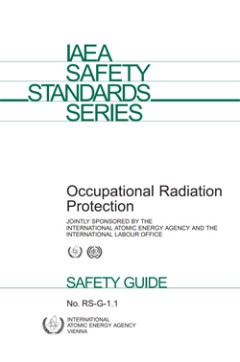
Occupational Radiation Protection | IAEA Safety Standards Series No. RS-G-1.1
This Safety Guide, co-sponsored by the ILO, provides general guidance on the establishment of an effective radiation protection programme for occupational exposure, appropriate for the sources of radiation likely to be encountered in a range of industries, medical institutions, educational and research establishments and nuclear fuel cycle facilities. It further provides the necessary guidance …
- Edisi
- -
- ISBN/ISSN
- 92-0-102299-9
- Deskripsi Fisik
- 73p; 243KB
- Judul Seri
- -
- No. Panggil
- 613.62 IAE O
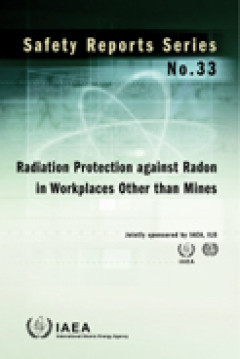
Radiation Protection against Radon in Workplaces other than Mines | Safety Re…
This report deals with radon and thoron and their decay products in workplaces other than mines. It is intended for use in the application of radiation protection principles in those workplaces where employers may not have an extensive background in radiation protection. It provides practical information on action levels for workplaces, on monitoring techniques and on actions aimed at reducing …
- Edisi
- 33
- ISBN/ISSN
- 92–0–113903–9 / 1020–6450 ; no. 33
- Deskripsi Fisik
- 79 p;57KB
- Judul Seri
- -
- No. Panggil
- 613.62 IAE R
 Karya Umum
Karya Umum  Filsafat
Filsafat  Agama
Agama  Ilmu-ilmu Sosial
Ilmu-ilmu Sosial  Bahasa
Bahasa  Ilmu-ilmu Murni
Ilmu-ilmu Murni 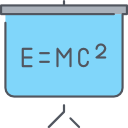 Ilmu-ilmu Terapan
Ilmu-ilmu Terapan  Kesenian, Hiburan, dan Olahraga
Kesenian, Hiburan, dan Olahraga  Kesusastraan
Kesusastraan  Geografi dan Sejarah
Geografi dan Sejarah